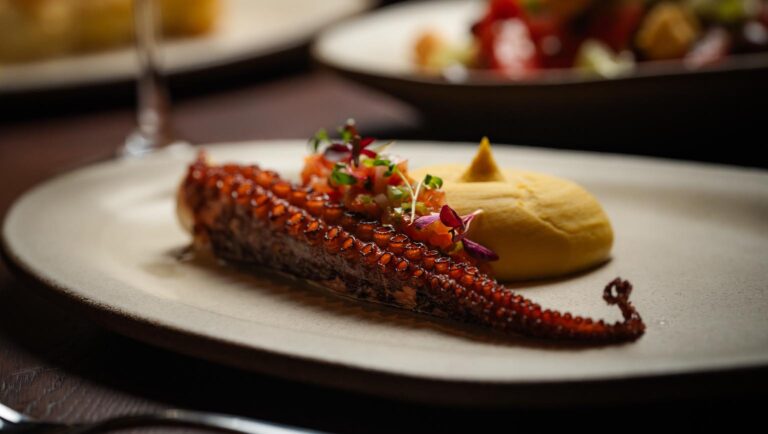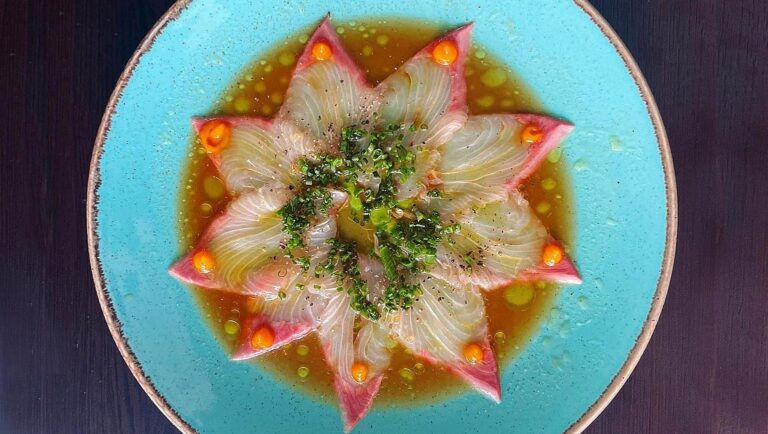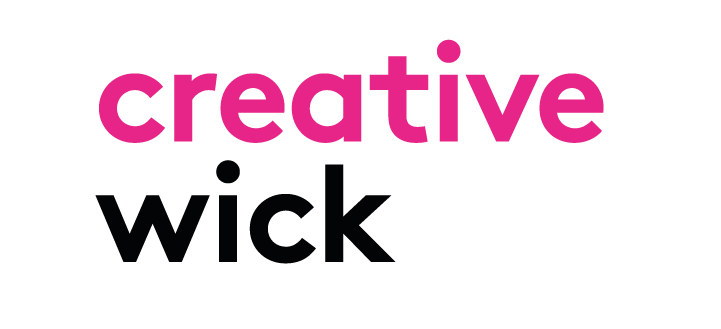
Review: HERA, Greek-inspired dining at Stratford Cross
This thoroughly modern restaurant may be far from the taverna, but it’s filled with Mediterranean flavours, and much more
In recent times it’s been easy to imagine the end of the world, but it’s remained almost impossible to imagine the end of music. And it turns out the way that most people like to eat, drink, dance or even sit to music, is together – at night. Food, drink, music, film, dance, fashion, art, skating and so many other subcultures in London are so intrinsically entangled with nightlife that it makes no sense to differentiate them, and this is especially true in Hackney Wick.
In 2014, Sadiq Khan set out his vision for the future of the nighttime in London: 24-hour tubes, new provisions to protect nightclubs, theatres, venues and anywhere that might make a bit of afterhours noise – and a ‘Night Czar’ to boot. Flash forward to the turn of 2022, and the restrictions arising from COVID-19 have shown us just how valuable our nightlife is to the economy and how absolutely essential it is to any local community with aspirations to be culturally relevant.
I’ve lived, worked and been throwing events in Hackney Wick since 2011 and am very proud to run East London’s only large black-owned live and electronic music venue. At Colour Factory we’ve made a commitment that all our lineups and events will feature an LGBTQ2IA+ and POC artist, and all of our music and event programming is centred around providing a space where inclusivity and freedom of expression are paramount. By providing a space where marginalised communities can share, perform and thrive, we also provide a space where we can all learn so much more from one another as intersectional beings regardless of our own identity categories.
There are around 100 people that work at Colour Factory each week: 6 managers, 6 supervisors, 6 cloak room attendants, 5 cleaners, 12 security and welfare staff, 40 bar tenders, 3 sound engineers, 1 lighting engineer, 2 bar backs and 5 independent food traders made up of around 15 kitchen staff. We put on live music concerts, electronic club nights, fashion shows, food festivals, talks, theatre performances, skate clubs, films, art installations and a lot of everything in between to an average of 3000 different people each week and serve drinks and food to an average of 5000 per week. On an economic level, it’s not just our staff that are employed here but we use more than 50 local suppliers. The vast majority of this happens at night.
I believe nightlife is the heart, the core and the soul of Hackney Wick in so many different ways – it’s what makes our studios, flats and streets so valuable and teeming with possibilities for culture. Would we pay the same price to live or work somewhere with a less diverse cultural landscape? The economy relies on nightlife – the value of local property certainly does. With more development looming, the grassroots music venues of Hackney Wick are on limited timelines. So I call on councils, developers, architects and planners to find new secure homes for the likes of amazing, emerging-artist-focused venues such as Grow, Number 90, HWK, The Yard Theatre and Colour Factory. To protect these spaces where people come together at night is to protect the social and economic fabric that ties this neighbourhood together – new tenants to old, prospective tenants and existing ones.
By working together we have an opportunity to make Hackney Wick a shining gold standard example of how diverse, leading-edge nightlife can serve its local community and economy by steering it towards the forefront of culture. One thing that COVID has certainly changed is the ability for people to happily work from home in the day, but it would be a pretty sorry world if we all lived from home at night.

This thoroughly modern restaurant may be far from the taverna, but it’s filled with Mediterranean flavours, and much more

How Hackney’s growing textile reuse infrastructure is inspiring the eco-conscious fashion designers of tomorrow

Nikkei food – where Japanese sushi meets Peruvian ceviche – and great cocktails at this popular local spot
A joint venture in collaborative local media from:


In partnership with

Regulated by IMRESSS, the Independent Monitor for the Press CIC.
For more info on our complaints policy, or to make a complaint, visit FAQ.
